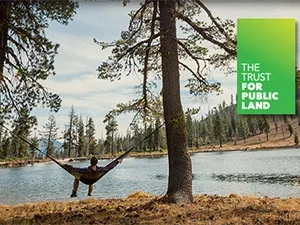Delving into Urban Studies
How can artistic and cultural displays in public places contribute to a community’s overall health? At The Trust for Public Land, Roua Sibai ’21 explored this question during her summer Field Work Term (FWT) as a creative placemaking intern.

TPL aims to create parks and protect land for communities to enjoy, which includes community engagement efforts supported by creative placemaking.
“Since their decisions affect the community, they believe the community should have a say in their efforts,” said Sibai. “They focus a lot on those needs: what people want, what the culture is, how to represent the community in public spaces.”
During the course of her internship, Sibai worked on three distinct projects, the first of which was a report on Philadelphia’s North American Street, an area TPL has targeted for renewal. Sibai researched the history of Philadelphia and the area itself, compared the successes of other cities that had undergone this process, and suggested tactics to apply those findings to TPL’s project.
As her second internship responsibility, Sibai reviewed literature that linked public land to public health.
“Some of the impacts are physical, like making cities safer by making spaces for people to enjoy themselves as a community,” said Sibai. “But that has mental and emotional effects, too. If the community has places to gather together, you can decrease overall depression rates and make people happier. Those different aspects increase public health.”
TPL is also preparing to host creative placemaking workshops in both Kansas City, MO, and Boston, MA, later this year, a selection that was made as the result of a competitive national application process.
“For my third project, I conducted interviews with different organizations and local people working in those cities who know more about what's happening in their communities,” said Sibai. “My goal was to find what those communities want to gain from their workshops and how TPL can help them solve problems.”
The most rewarding part of her internship, said Sibai, came shortly after its completion, when she sent an email to her supervisor thanking him for the experience.
“He mentioned that they’d published a report I was working on, and that the people who read it said it was helpful,” said Sibai. “So reading that was like, ‘Okay, I did something. My work actually matters.’ When you’re an intern, sometimes you feel like you don’t have much responsibility, but after reading that email, it was nice to think my work made a difference.”
Sibai’s internship at TPL was her first work experience beyond holding volunteer positions. She credits the internship for teaching her how to navigate an office environment and introducing her to new fields of urban studies beyond what she’s learned in the classroom.
“I enjoyed talking to people who have the same interest that I do, but in a more advanced way, since most of them have their master's degree,” said Sibai. “I had so many helpful, rich conversations.”
As Sibai continues to delve into her studies, she is interested in using her next FWT to learn more about a branch of urban planning called emergency urbanism, which addresses rapidly growing urban populations by fitting environments to people, rather than the opposite.
“Since I’m Syrian, I follow the news of what’s happening with the refugees and the camps around the world,” said Sibai. “I volunteered last summer at a camp in Lebanon. After that, I was interested to see the differences between each camp and how putting different camps in different countries can affect people’s experiences.”
Sibai came across a report about the Zaatari camp in Jordan that fascinated her.
“The camp was built quickly without the government realizing that such a huge number of people would be coming to it,” said Sibai. “At the same time, though, it was planned in a way that looks like a small Syrian town, so people would feel kind of at home even though they weren’t on Syrian land.”
Sibai is interested in how people interact with architecture and urban areas, as well as how to distill those interactions into translatable principles for urban planning. After Bennington, she hopes to gain work experience that will then guide her path into graduate studies.
“This first FWT made it clear to me that I want to continue with urban studies, and it made me think about options for what I want my career after graduation to be,” said Sibai. “I have an image of what I want to study, but FWT is an eye-opening opportunity to see how diverse that field is.”
By Natalie Redmond, Associate Writer